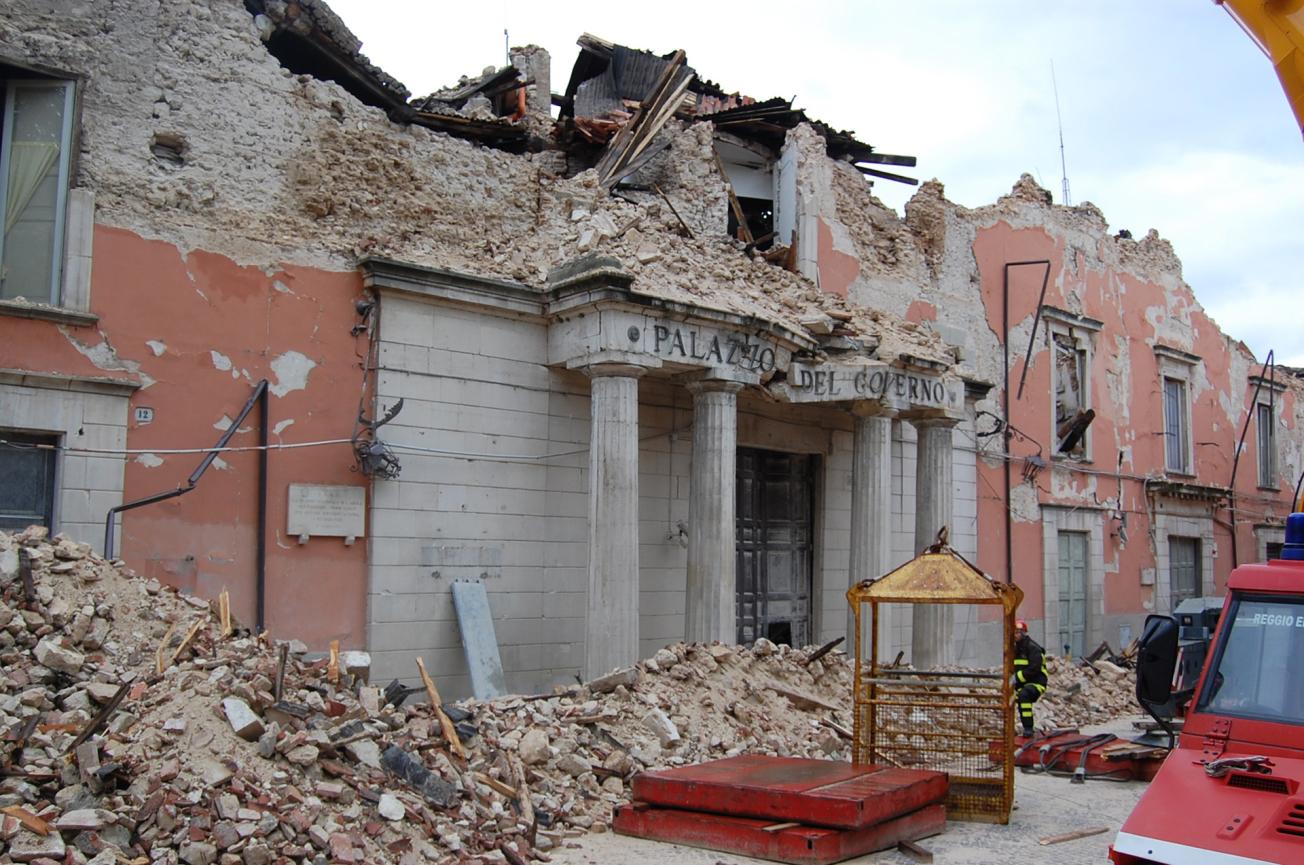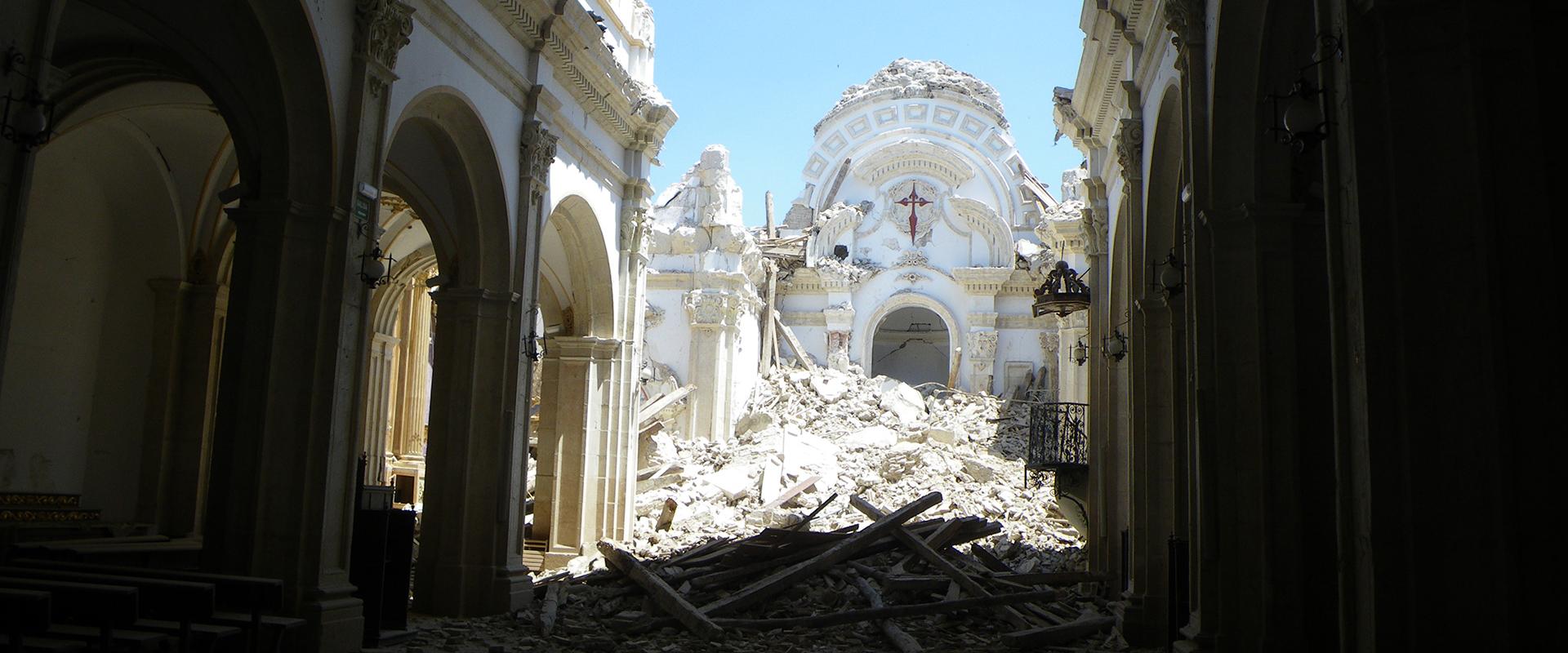
Improving methods for assessing the vulnerability of buildings to earthquake damage is essential to produce more reliable earthquake risk assessments (here, the Aquila earthquake, Italy, April 2009).
© BRGM - Julien Rey
BRGM, as one of Europe’s leaders in natural risk assessment, conducted two collaborative research projects, in 2006-2008 and 2008-2011, on the vulnerability of buildings to earthquake damage.
Assessing the behaviour of buildings during earthquakes
These two projects, conducted with NECS, a company specialising in digital modelling of building behaviour, focused respectively on assessing damage to buildings made of reinforced concrete (VEDA project) and brickwork (EVSIM), as the construction methods and materials used have a significant influence on the response of buildings to seismic shocks.
Improving risk assessment
The same approach governed the research in both projects towards the same objective: improving methods for assessing the vulnerability of buildings to earthquake damage to produce more reliable earthquake risk assessments.
The new tools developed now incorporate two parameters that link the level of seismic risk with the degree of damage caused.
More reliable models
Up to now, a single parameter (maximum acceleration, maximum displacement,…) was used in models to represent seismic movements and plot a “fragility curve” for buildings. The new models can, for example, incorporate acceleration at ground level AND its duration, thereby allowing a far more relevant “area of fragility” to be defined to assess damage according to each earthquake.
Comparison with post-earthquake observations
Laboratory tests and comparisons with post-earthquake observations are continuing, pending the forthcoming delivery of the complete digital models and methodology, which will provide - for each type of building - the most relevant paired parameters of movement to assess the probability of damage and thus predict the consequences of an earthquake more accurately.







